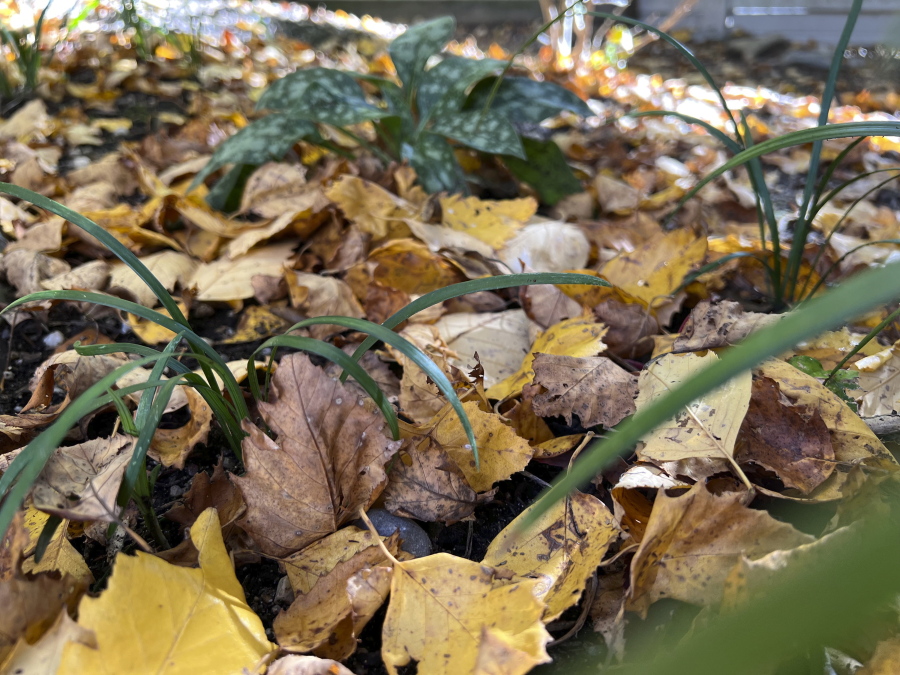Then spread 3 to 4 inches of well-drained, unsterilized compost over the leaves (or directly onto the soil if there are no leaves) and level it with a stiff-toothed rake. It will feed beneficial microbes and other soil-dwelling organisms and release high-quality nutrients into the ground to feed your plants.
Contrary to the old opinion of gardeners, it is better not to amend the soil. This can damage soil structure, disrupt valuable fungal filaments, kill earthworms and other beneficial insects, and bring weed seeds to the surface.
Remember, the richest soil is on the forest floor, and no one has dug it up. So, if your goal is to fix a drainage problem, follow nature’s example and apply the amendment directly to the ground. They will be up and running over the next few months.
Apply 2-3 inches of mulch over the compost to further suppress weeds and moderate soil temperature and moisture throughout the winter. If plants are already growing in the bed, delay adding mulch until after a hard frost and keep compost and mulch a few inches away from the stems and trunks to prevent rotting.
By spring, the benefits of the amendments will be available at the root level and the soil will have softened to facilitate planting. Push back the mulch and plant the plants.
Your new garden will thrive in the rich organic environment you’ve created and reward you with vigorous growth, beautiful flowers and abundant vegetables. And they will be stronger, healthier and better able to resist pests and diseases.




![Best Luxury Brands [2022 Review]: Find Fashion Online](https://www.mcclatchy-partners.com/advon/shopping/all-markets/tjbqyj/picture268264467/alternates/LANDSCAPE_1140/Luxury-Brands.jpg)

